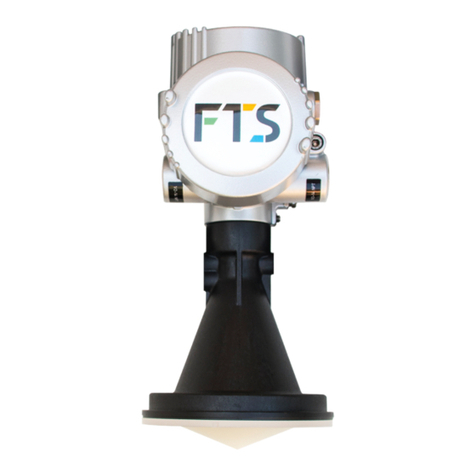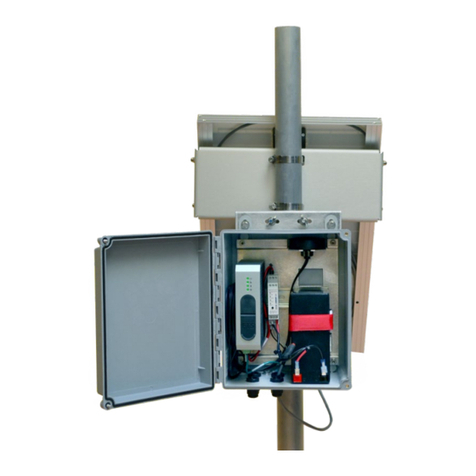
700-SDI-RADAR-LX-80-Man Rev 1 08 Oct 2021 3/49
2.2 RADAR CALIBRATION
The level meter is able to perform self-calibration which calibrates the radar transceiver electronics.
Each instrument is calibrated in the factory, and the factory calibration parameters are stored in the
device. Typically, there is no need to repeat self-calibration, even after using the level meter over
several years. In extremely rare cases, if a level meter is not accurately measuring the water level,
self-calibration may be required during troubleshooting. Self-calibration is conducted through the
Instrument Configurator application (refer to Chapter 8) by clicking on Calibrate radar button which
is visible in the Settings page of the application.
2.3 FUNCTIONAL PRINCIPLE
The LX-80 operates by transmitting a linear chirp in the frequency range between 77 GHz and 81
GHz and measuring the frequency shift of the electromagnetic wave reflected from the water’s
surface. The measured distance is proportional to the frequency difference between the
transmitted and received signal due to the Doppler Effect, converted into an appropriate output
signal and output as a measured distance. The modulation and detection process in the sensor
enables precise measurements which are not affected by air temperature, humidity, or other
environmental factors.
The distance measuring sensor in the instrument is designed to detect and eliminate obstacles from
the distance measurement signal spectrum. However, vibrations in the radar’s mounting position
can negatively impact this ability.
The radar beam utilizes an averaging effect over the beam’s surface footprint which assists in
reducing measurement errors caused by oscillations and undulation of the water’s surface. Slight to
moderate waves on the water’s surface will affect the measured signal level, usually seen as a
reduced SNR (Signal to Noise Ratio), but in most cases will not affect measurement accuracy.
However, if the measured surface is highly turbulent, the unpredictability of the water surface will
reduce accuracy. In that case, the length of the radar filter can be adjusted to filter out most, if not
all, the turbulence.
For best measurement results mount in accordance with directions given in Chapter 4.
2.3.1 MEASUREMENT THROUGH CONTAINERS
The LX-80 can be mounted outside of a container made of dielectric (non-conductive) materials to
measure the level of the liquid inside of the container. The radar’s microwave signals easily pass
through most dielectric (non-conductive) materials. Common Dielectric materials used in industry
and buildings such as ABS, PVC, Nylon, Teflon, Polycarbonate, Plexiglas, Polyamide, and
Polypropylene are very suitable for microwave level measurement from outside of the containers. In
such applications. The radar can be mounted above the container and pointed to the liquid inside
the container below the sensor, following the same mounting principles outlines in Chapter 4.


































